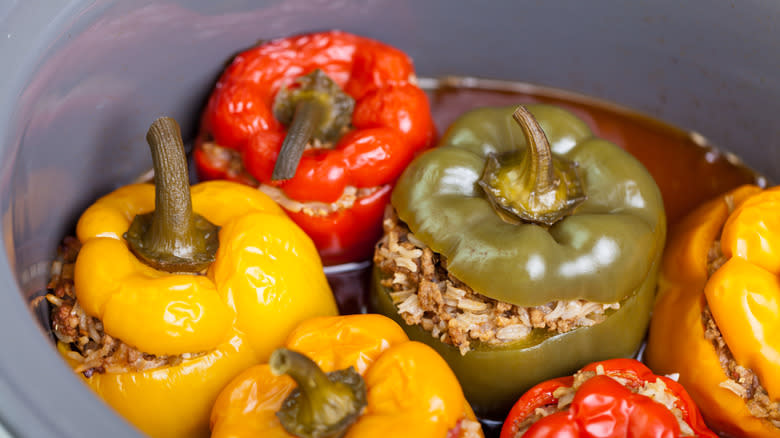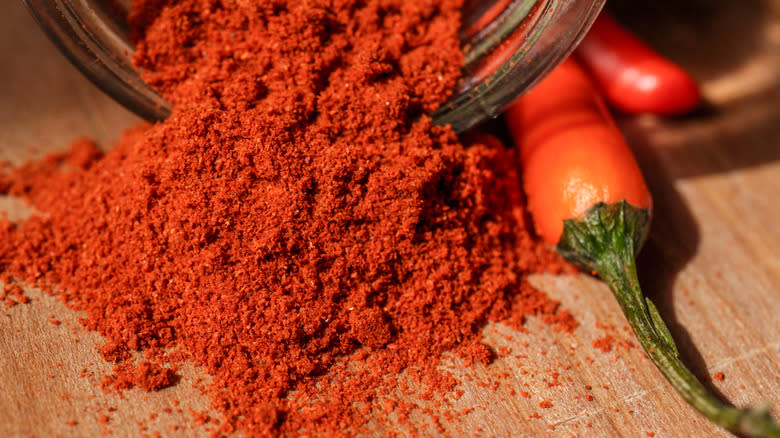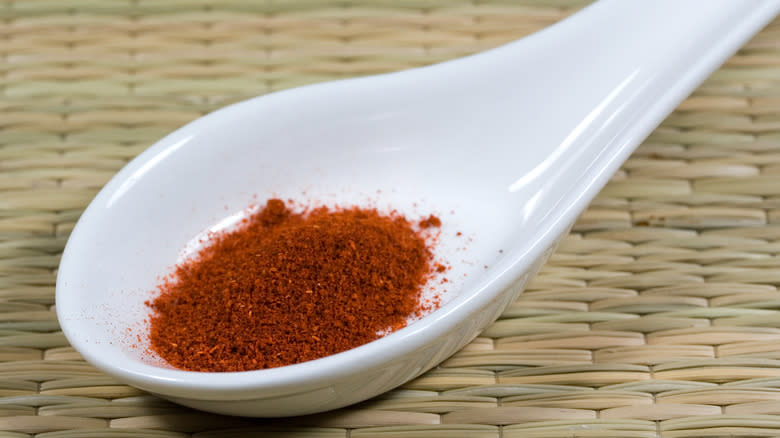What Makes Hungarian Stuffed Peppers Unique?

We may receive a commission on purchases made from links.
Good ideas proliferate, and this truism goes double in the culinary world. The concept of stuffing a bell pepper with ground meat, rice, and vegetables has a probable history and extends far beyond its written one -- and there are two stuffed pepper recipes in Fanny Farmer's famous 1896 cookbook. Regardless of who invented the stuffed pepper (likely people from Central and South America, where it originated), the idea has taken over the world, spreading from Denmark to India. One delicious variant is the Hungarian stuffed pepper known as töltött paprika, and there's one thing that sets this particular recipe apart: Hungarian paprika.
Okay -- technically, there are two ingredients that distinguish Hungarian stuffed peppers. The second one is the sour cream garnish (Hungarians absolutely cannot do without the stuff). While finishing your Hungarian stuffed peppers with a generous dollop of sour cream (or crème fraiche) is highly recommended, that part is optional -- but using Hungarian paprika is not. But why? Isn't all paprika the same?
Read more: 11 Of The Best Cooking Tips From Bobby Flay
Terroir Makes All The Difference

To answer that question, we must first contemplate wine. If you've ever had the good fortune to compare a big, buttery California chardonnay to a more minerally French white Burgundy like a Pouilly-Fuissé, you probably wouldn't recognize that both are made from the same grape on taste alone. This is because of a French concept called terroir, which accounts for how the climate of a given region affects certain crops. Variations in soil content, rainfall, and sunlight can all have a major influence on how grapes grow and taste -- and the same goes for Capiscum annum, the red pepper from which all paprika is made.
Just like the bell pepper, Capiscum annum was also introduced to Europe around the end of the 15th century, making its way to Hungary about a hundred years later. As it turned out, those two got on like a house on fire, with the plant not only flourishing in many regions but becoming the defining ingredient in Hungary's national dish: chicken paprikash. Hungarian paprika can be sweet, hot, bright red, or pink -- in fact, the country is responsible for producing seven different variations of the spice. They're not kidding around.
How To Buy Hungarian Paprika

The kind of Hungarian paprika you're most likely to come by in the United States is a fulsome, sweet, vibrantly red-hued variety known as édesnemes, though in the store it should simply be labeled "Sweet Hungarian Paprika." It is so worth buying this stuff, for the simple reason that you'll be tasting (and have available in your spice drawer) one of the most famous types of paprika on earth -- entirely distinct from the smoky Spanish version or comparatively bland domestic offerings.
As for what kind of Hungarian paprika you choose, that's up to you -- because they smoke their spice too (here's a primer on the difference between sweet and smoked paprika), also offering fiery versions as well as sweet. Once you've made Hungarian stuffed peppers starring your brand-new best spice friend, the last step is the sour cream garnish. By the way, have we mentioned just how beautifully Hungarian paprika goes with sour cream? It's like they were made for each other.
Read the original article on Daily Meal.

